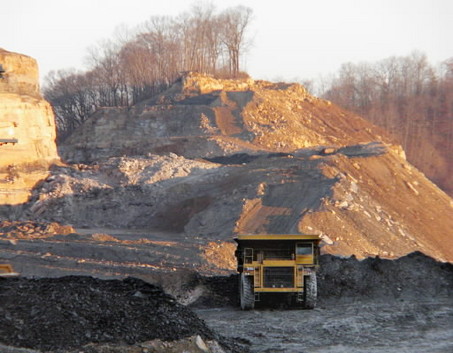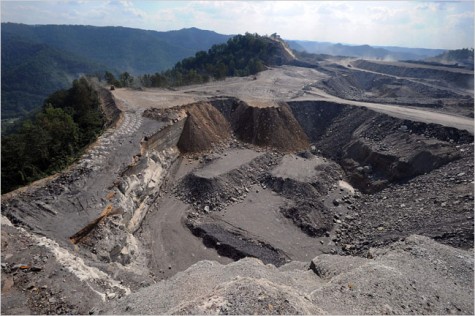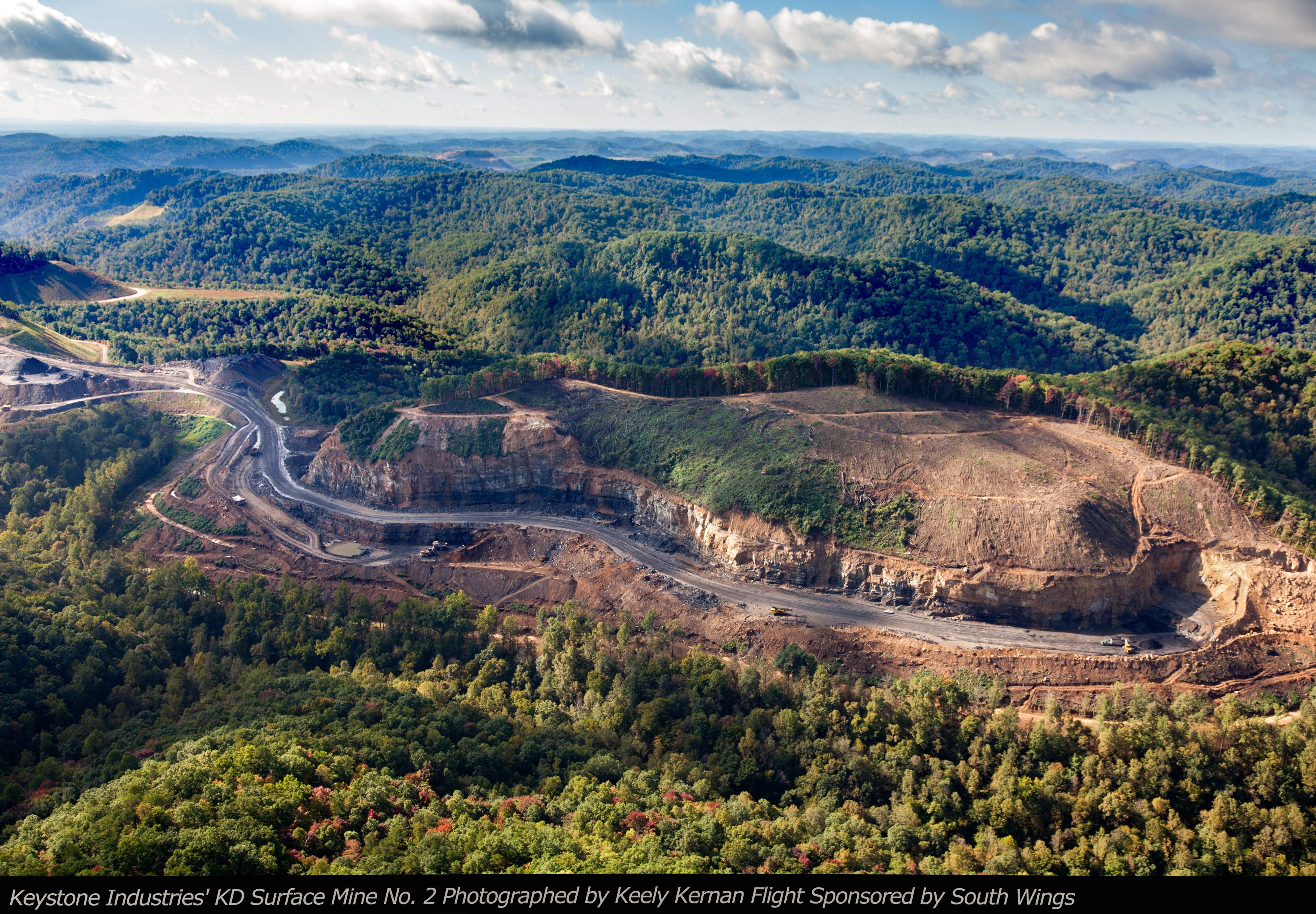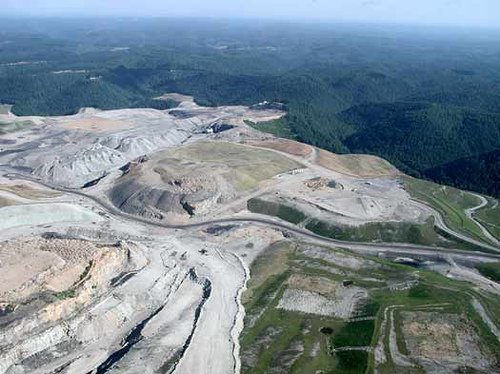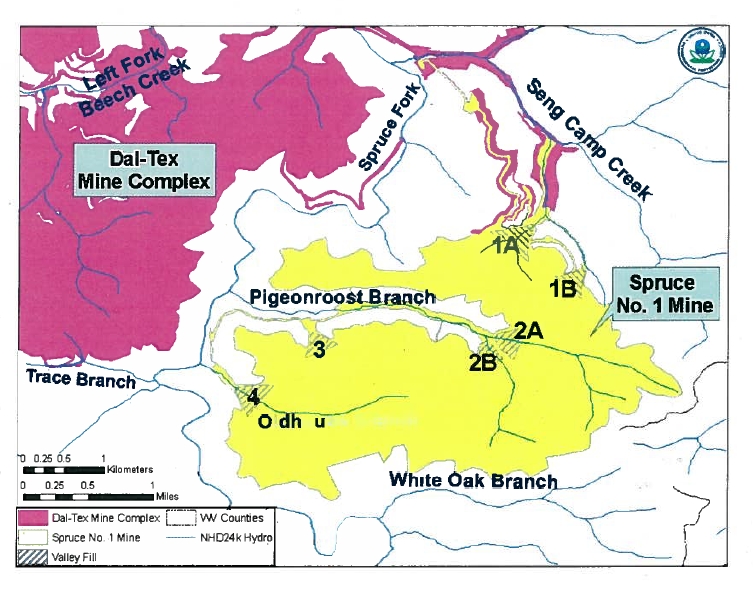The real story of the Hobet project and how lax mountaintop removal regulation has held back coalfield development
December 19, 2017 by Ken Ward Jr.
A supporter of coal-fired power plants sits in the stands at Highmark Stadium during a rally to support American energy and jobs in the coal and related industries in downtown Pittsburgh, Wednesday, July 30, 2014. (AP Photo/Gene J. Puskar)
There’s a flurry of stories out this week about some changes that Gov. Jim Justice is making to the Tomblin administration’s signature coalfield economic development project: The industrial park at the Hobet mountaintop removal mine site along the Boone-Lincoln County border.
The headlines are things like “Justice puts brakes on Rock Creek development plans” and “Rock Creek pivot: Hoyer says site has great potential for military training.” Oddly, the headline on the governor’s press release was, “Gov. Justice says Immediate Economic Activity to Begin at Former Hobet Mine Site.”
Really, though, the headline for any of these stories should have been: Lax regulation of mountaintop removal continues to hinder coalfield economic development.
The basics of the news this week is this, as our Gazette-Mail story explained:
Gov. Jim Justice confirmed Monday that he is putting the brakes on one of his predecessor’s loftiest proposals, to convert a 12,000-acre strip mine site in Boone and Lincoln counties into West Virginia’s largest multiuse development park.
Justice announced that he is canceling, for now, a proposed $100 million four-lane highway to link the Rock Creek Development Park with Corridor G north of Danville, opting instead for a $30 million upgrade of the existing mine haul road.
… Justice said his administration will initially emphasize the site’s use by the West Virginia National Guard as a primary mobility training site, “teaching driving techniques in various military vehicles on a variety of terrains.”
But to understand the underlying issues here, you need to go back to our investigation of mountaintop removal mining way back in 1998. As we explained at the time:
Across the Southern West Virginia coalfields, mountaintop removal mining is turning tens of thousands of acres of rugged hills and hollows – nobody knows how many – into flat pastures and rolling hayfields. A new coal industry advertising campaign declares that mine operators who lop off mountaintops are building “West Virginia’s Own Field of Dreams.”
“Like the Iowa farmer in the movie, ‘Field of Dreams,’ if we build the sites, they will come,” the industry ads say. “And when they come, they will bring with them better jobs, housing, schools, recreation facilities, and a better life for all West Virginians.”
A continuing Sunday Gazette-Mail investigation has found that these predictions have not come true and that, without major regulatory changes, they aren’t likely to come true anytime soon. Coal industry backers point to a few small mountaintop removal jobs that were turned into homes for the new state prison, a high school and an air strip. But most coal companies plan to leave giant mountaintop removal mines as flattened-out fields …
Now, there have always been some significant questions about former Gov. Earl Ray Tomblin’s proposal for the Hobet site. And maybe given where things stand now, State Adjutant General Jim Hoyer is right about the direction the project should be heading.
Continue reading…

 Subscribe to the Coal Tattoo
Subscribe to the Coal Tattoo

